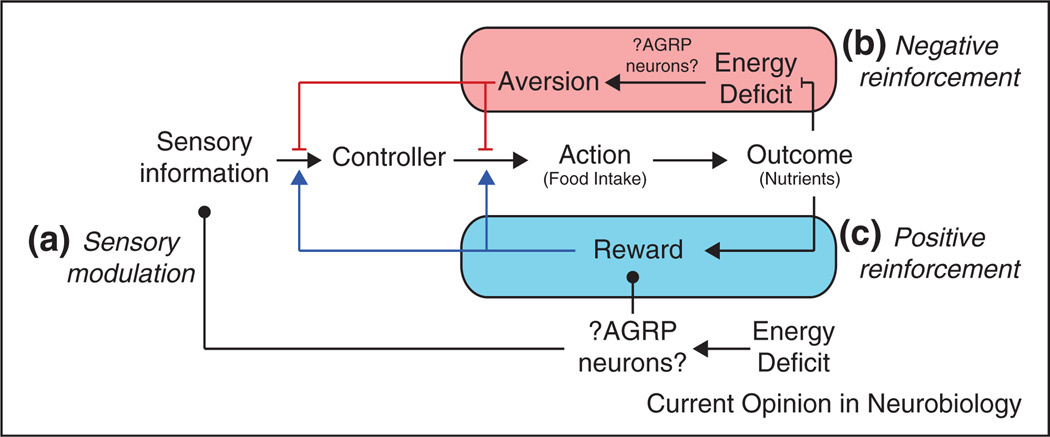Figure 2.
Control processes for food seeking and consumption behaviors that may be modulated by AGRP neurons activated during energy deficit. Sensory information is integrated by multiple brain systems that influence control of motor actions (these systems are represented generically in the diagram as ‘Controller’), including those involved in food seeking or consumption. (a) AGRP neurons, which are activated by energy deficit, could increase the sensitivity to sensory stimuli associated with food. (b) Negative reinforcement. For a food deprived animal, sensory information or actions that lead to nutrient ingestion could be reinforced by suppressing an aversive energy deficit state, possibly mediated by AGRP neurons. Red T-arrows represent a state-dependent aversion signal whose offset increases the propensity to respond to sensory cues that predict food or to select actions that result in nutrient consumption. (c) Positive reinforcement. Nutrients are rewarding, even in the absence of a need state, and energy deficit, possibly acting through AGRP neurons, may increase the reward value of food. Blue arrows represent a signal that reinforces responding to sensory information or action selection that results in nutrient ingestion.

